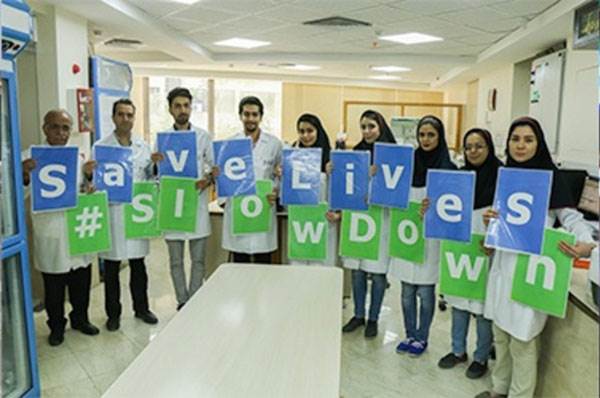Excessive or inappropriate speed contributes to one-third of the 1.25 million road fatalities that occur around the world every year, and 40-50 percent of drivers go over posted speed limits. Highlighting the threat posed by speed, and launching new guidance to make roads safe are the key elements of the 'Fourth UN Global Road Safety Week' being held from May 8-14. The UN held a virtual press meet today conducted by Etienne Krug, director, Department for Management of NCDs, Disability, Violence and Injury Prevention, WHO; Zoleka Mandela, ambassador, Global Initiative for Child Health and Mobility; and Saul Billingsley, executive director, FIA Foundation.
According to studies, close to 30 percent of the total road accident fatalities around the world are a result of high speed or over-speeding, leading to loss of precious lives, many of which include the youth in their prime years and result in a severe financial hit to the immediate families.
Since road safety is one of the major targets of the UN’s sustainable development programmes for different countries, a young member of a family encountering a crash indirectly hampers the economic development of society at large, by bringing down an earning member of the family or by also leading to huge debts due to hospitalisation expenses.
As a result, it is the low and the middle income countries, which need to be focussed upon to curb their speed limits, as the road accidents in these countries contribute majorly to the overall number of 1.25 million road deaths across the world every year. This includes India, which has one of the highest road accident fatality records in the world. Developed countries like the UK and Sweden have also been witnessing a rapid increase in the number of road accidents in recent times.
UN recommendations for safer motoring
To achieve the UN’s target of bringing down the mortality rates by up to 50 percent, the global organisation says it is imperative to stress upon infrastructure development in these countries. This also includes enhancing the enforcement of various regulations in place, inculcating good driving practices and offering good driver training.
WHO recommends stringent laws for drunken driving, stricter policies for graduation of driving licenses and further reducing speed limits in many countries up to 30kph or 50kph to improve the safety of the road ecosystem.
According to the speakers at today’s virtual press conference, cities also ought to get a better and more robust infrastructure, with proper space for pedestrian movement as well. Also, the role of mayors will be critical; mayors have proactively come forward and drastically changed the situations in cities like Sao Paulo in Brazil.
Commenting on automotive manufacturers, the UN also suggests that the burden lies on the major global players in enhancing vehicle safety, for both passengers as well as pedestrians in the form of their designs and technologies on offer. Safety equipment like Autonomous Emergency Braking is already proving to be a life-saving tool, avoiding many a critical mishap. Awareness of safer driving practices would only supplement life-saving modern technologies.




Comments
Member Login
Personal Details
No comments yet. Be the first to comment.